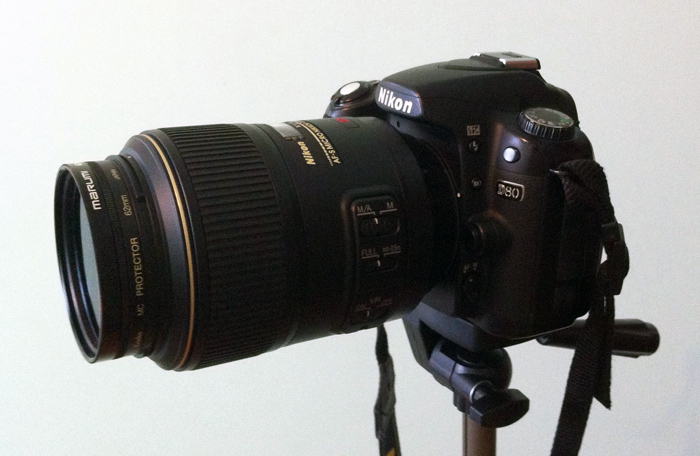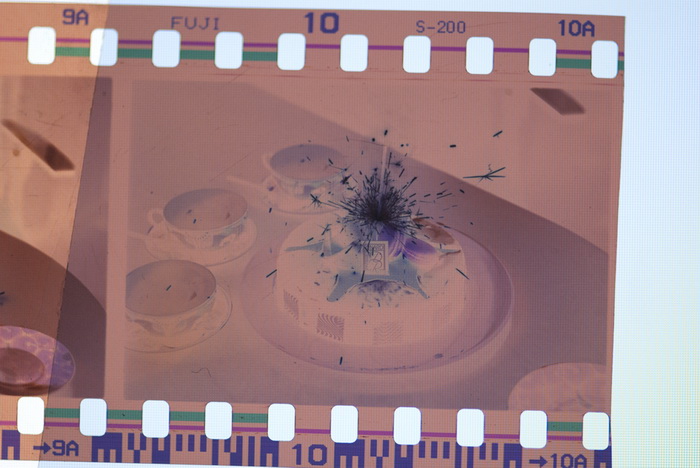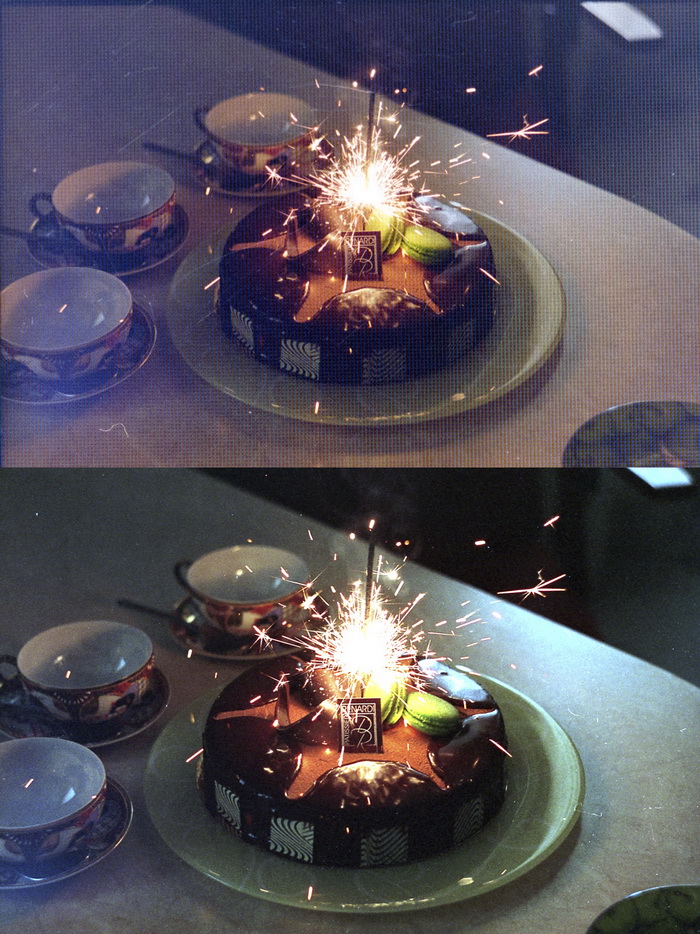Zenith 122 SLR camera review and 35mm film digitization
In this article I will introduce you to the Zenit 122 film camera and explain why I consider it a very good camera for beginner photographers.

Under the cut - a little theory and history, a review of the camera and digitized pictures.
We will also consider various ways of digitizing 35mm negatives.
Warning traffic!
Zenith is probably the most famous brand of cameras that the USSR produced. The first camera of this series went on sale in 1952, and for all the time more than 40 models were released. All of them are designed to work with the familiar 135 type film (ordinary 35mm film), which can now be purchased at any photo store.
You can purchase the camera on any Internet flea market for prices ranging from 500 to 5000 rubles, and for many of you it already lies somewhere on the mezzanine.
For beginners, I advise you to choose models 122, TTL, 10-19 because of the built-in exposure meter.
With the exception of the light meter, these cameras are completely mechanical and you need to manually configure all the shooting parameters. If you do not know what an exposure, aperture, or DOF is, I strongly recommend that you read this article. When reading the article, mentally replace all the words “sensor” and “matrix” with the word “film” - otherwise, the setting of the film camera is practically no different from the setting of its modern digital descendants. The only difference is the film is responsible for white balance and ISO. Just try different films to see the difference.
Controls Zenit 122:

Many scold this model for a small number of shutter speed options: manual, 1 to 30, 60, 125, 250 and 500 - this is really not enough. Especially on a sunny day - 1/500 is a very long time.

ISO options are 25, 50, 100, 200, 400. The
Zenith 122 came with Helios and Zenitar lenses. Unfortunately, I can’t say anything about Zenitar from personal experience, but they say on the Internet that it is more harsh. In any case - they cost a penny and you can take both.
On my Helios-44M lens you can set aperture values from 1/2 to 1/16.
Also, the camera has a self-timer, frame counter, a standard tripod socket and an external flash mount.
Rear view of the camera: The


camera is equipped with a built-in exposure meter, working on the TTL system. This means that metering is done through the camera lens. The principle of its use is as follows - when you press the shutter button slightly, one of the 3 LEDs lights up in the viewfinder. The upper and lower red LEDs mean overexposure and underexposure, and the central green means the correct exposure setting. I am completely satisfied with the work of the exposure meter, however, with a long manual shutter speed it is better to turn it off - the red light from the LED is visible below:

The entire process of charging and discharging film in Zenith can be seen on YouTube.
Here are examples of my shots:
And finally - the pros and cons of the Zenith camera for the novice photographer
Pros
In addition, it is impossible to describe that pleasant feeling when you are running all in anticipation of taking your pictures from the salon. It needs to be experienced :)
Cons
Now I’ll talk about some ways of digitizing negatives.
So, how to get our photos from the film?
In any case - first you need to develop the film - this process is very painstaking and not simple, so for a start I advise you to hand over the film for development to a photo studio. In addition, pleasure is very cheap: 20-50 rubles per film. At the output, we get color negatives (if your film is ordinary, the development processes are CN-16 and C-41, this is written on the box).
You can start digitizing in one of the ways, then we will analyze each of them:
The easiest way - you hand over the negatives to the photo studio, they are scanned there and written to disk or to any of your media. The service costs around 100-150 rubles.
Conventional home scanners are not suitable for scanning film, even if they come with a slide module (a plate inside which films are placed). In the worst case, you get a black square, at best - almost black.
The thing is that when scanning it is necessary to illuminate the film from the back side , i.e. from the side of the lid.
There are special tablet photo scanners that can do this. For example, the images above were digitized using an Epson Perfection V500 Photo scanner:

The picture shows that the film is illuminated by LED backlighting from above. Complete with a scanner are slide modules for different film formats:

The software that comes with the scanner has special modes for scanning films. You can choose to remove dust, artifacts and color correction when scanning negatives. There is also a Digital Ice mode - eliminating dust and scratches during the scanning process.
The cost of such a scanner is from 6,000 to 30,000 rubles (although you can find orders of magnitude more expensive, but does it make sense for home use?).
For scanning negatives, there is a separate type of device - slide scanners:

They differ from each other in resolution and additional pluses, for example - scanning without connecting to a PC, to an SD card.
The cost is from 3,000 rubles to 20,000 (again - for those who wish it can be more expensive).
Another way to digitize is to shoot our negatives on a digital camera with a macro lens. The technology is as follows - we highlight the film at the back (with a monitor, a lamp - whatever, but with white light), photograph it with a digital SLR and process it in a photo editor.
Due to lack of time, I took pictures from the monitor screen, so giant pixels on the film are visible. To avoid them, you need to put a white sheet of smooth paper between the film and the monitor.
For shooting, we used a Nikon d80 with a Nikon 105mm f / 2.8G IF-ED macro lens:

Attach the negatives to the monitor and take pictures:

Open in the photo editor and invert colors:

Change the color balance, play with the levels and exposure and you're done!
Comparison with a photo from a scanner:

Once again, sorry for the pixels from the monitor - if normally backlighted, then they will not. Most importantly, I wanted to show the principle.

Under the cut - a little theory and history, a review of the camera and digitized pictures.
We will also consider various ways of digitizing 35mm negatives.
Warning traffic!
Camera overview
Zenith is probably the most famous brand of cameras that the USSR produced. The first camera of this series went on sale in 1952, and for all the time more than 40 models were released. All of them are designed to work with the familiar 135 type film (ordinary 35mm film), which can now be purchased at any photo store.
You can purchase the camera on any Internet flea market for prices ranging from 500 to 5000 rubles, and for many of you it already lies somewhere on the mezzanine.
For beginners, I advise you to choose models 122, TTL, 10-19 because of the built-in exposure meter.
With the exception of the light meter, these cameras are completely mechanical and you need to manually configure all the shooting parameters. If you do not know what an exposure, aperture, or DOF is, I strongly recommend that you read this article. When reading the article, mentally replace all the words “sensor” and “matrix” with the word “film” - otherwise, the setting of the film camera is practically no different from the setting of its modern digital descendants. The only difference is the film is responsible for white balance and ISO. Just try different films to see the difference.
Controls Zenit 122:

Many scold this model for a small number of shutter speed options: manual, 1 to 30, 60, 125, 250 and 500 - this is really not enough. Especially on a sunny day - 1/500 is a very long time.

ISO options are 25, 50, 100, 200, 400. The
Zenith 122 came with Helios and Zenitar lenses. Unfortunately, I can’t say anything about Zenitar from personal experience, but they say on the Internet that it is more harsh. In any case - they cost a penny and you can take both.
 |  |
On my Helios-44M lens you can set aperture values from 1/2 to 1/16.
Also, the camera has a self-timer, frame counter, a standard tripod socket and an external flash mount.
Rear view of the camera: The


camera is equipped with a built-in exposure meter, working on the TTL system. This means that metering is done through the camera lens. The principle of its use is as follows - when you press the shutter button slightly, one of the 3 LEDs lights up in the viewfinder. The upper and lower red LEDs mean overexposure and underexposure, and the central green means the correct exposure setting. I am completely satisfied with the work of the exposure meter, however, with a long manual shutter speed it is better to turn it off - the red light from the LED is visible below:

The entire process of charging and discharging film in Zenith can be seen on YouTube.
Here are examples of my shots:
 |  |  |
 |  |
And finally - the pros and cons of the Zenith camera for the novice photographer
Pros
- Cost
- Understanding Camera Settings
- Reliability (mine is already over 20, but he takes pictures of everything))
- A limited number of frames. This makes you not thoughtlessly flip the shutter, but create a thoughtful composition right away.
- The artifacts of the film camera in the pictures - dust, glare, etc. If desired - easy to clean
- Charging will not drain, only exposure meter batteries, which are optional
- Vintage after all!
In addition, it is impossible to describe that pleasant feeling when you are running all in anticipation of taking your pictures from the salon. It needs to be experienced :)
Cons
- Limited frames
- Manual exposure
- Weight (820 grams)
- You cannot view pictures right away.
- No New On Sale
Now I’ll talk about some ways of digitizing negatives.
Digitizing negatives 35mm
So, how to get our photos from the film?
In any case - first you need to develop the film - this process is very painstaking and not simple, so for a start I advise you to hand over the film for development to a photo studio. In addition, pleasure is very cheap: 20-50 rubles per film. At the output, we get color negatives (if your film is ordinary, the development processes are CN-16 and C-41, this is written on the box).
You can start digitizing in one of the ways, then we will analyze each of them:
- Digitization in a photo salon
- Scanning
- Capturing negatives on a digital camera
Digitization in a photo salon
The easiest way - you hand over the negatives to the photo studio, they are scanned there and written to disk or to any of your media. The service costs around 100-150 rubles.
Scanning
Conventional home scanners are not suitable for scanning film, even if they come with a slide module (a plate inside which films are placed). In the worst case, you get a black square, at best - almost black.
The thing is that when scanning it is necessary to illuminate the film from the back side , i.e. from the side of the lid.
There are special tablet photo scanners that can do this. For example, the images above were digitized using an Epson Perfection V500 Photo scanner:

The picture shows that the film is illuminated by LED backlighting from above. Complete with a scanner are slide modules for different film formats:

The software that comes with the scanner has special modes for scanning films. You can choose to remove dust, artifacts and color correction when scanning negatives. There is also a Digital Ice mode - eliminating dust and scratches during the scanning process.
The cost of such a scanner is from 6,000 to 30,000 rubles (although you can find orders of magnitude more expensive, but does it make sense for home use?).
For scanning negatives, there is a separate type of device - slide scanners:

They differ from each other in resolution and additional pluses, for example - scanning without connecting to a PC, to an SD card.
The cost is from 3,000 rubles to 20,000 (again - for those who wish it can be more expensive).
Capturing negatives on a digital camera
Another way to digitize is to shoot our negatives on a digital camera with a macro lens. The technology is as follows - we highlight the film at the back (with a monitor, a lamp - whatever, but with white light), photograph it with a digital SLR and process it in a photo editor.
Due to lack of time, I took pictures from the monitor screen, so giant pixels on the film are visible. To avoid them, you need to put a white sheet of smooth paper between the film and the monitor.
For shooting, we used a Nikon d80 with a Nikon 105mm f / 2.8G IF-ED macro lens:

Attach the negatives to the monitor and take pictures:

Open in the photo editor and invert colors:

Change the color balance, play with the levels and exposure and you're done!
Comparison with a photo from a scanner:

Once again, sorry for the pixels from the monitor - if normally backlighted, then they will not. Most importantly, I wanted to show the principle.
